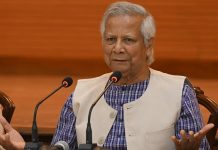The rupee closed at 88.3075 against the U.S. dollar, down 0.2 percent on the day. India’s benchmark equity indexes, the BSE Sensex (.BSESN), and Nifty 50 (.NSEI), ended lower by 0.5 percent each.
Domestic listed IT stocks (.NIFTYIT), fell nearly 3 percent after U.S. President Donald Trump imposed a $100,000 fee on new H-1B visa applications, raising costs and threatening growth in their biggest market.
“India stands out as the key country which could be negatively affected disproportionately by these visa changes,” MUFG said in a note. “From an FX perspective, we think this development gives us more confidence that the Indian Rupee will underperform Asian FX and core G10 crosses,” the note added.
Worries over steep U.S. tariffs have weighed on the rupee, down 3 percent this year versus 3 percent–6 percent gains in the offshore yuan and Korean won. On Monday, traders cited dollar demand from foreign and private banks pressuring the rupee even as the greenback slipped against major peers.
The dollar index was last down 0.2 percent at 97.47 as traders looked ahead to a slew of speeches from Federal Reserve officials throughout the week that could provide further clues to the U.S. rate outlook.
Money markets are currently pricing in a near 92 percent chance of a rate cut by the Federal Reserve in October, per CME’s FedWatch tool.
Earlier, U.S. President Donald Trump said that his administration is continuing negotiations to address trade barriers with India and that he would talk to Prime Minister Narendra Modi, in a sign of a reset after weeks of diplomatic friction.
Trump, in a marked shift of tone, said he looked forward to speaking to Modi in the “upcoming weeks” and expressed optimism that they could finalize a trade deal.






